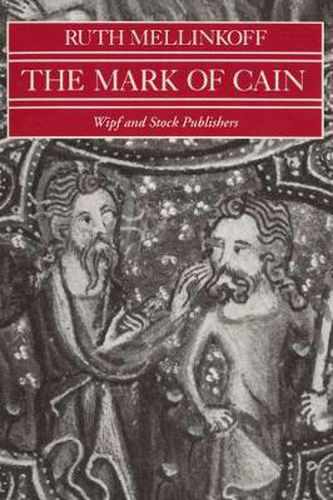Readings Newsletter
Become a Readings Member to make your shopping experience even easier.
Sign in or sign up for free!
You’re not far away from qualifying for FREE standard shipping within Australia
You’ve qualified for FREE standard shipping within Australia
The cart is loading…






For few verses in the Bible is the relationship between scripture and the artistic imagination more intriguing than for the conclusion of Genesis 4:15: And the Lord set a mark upon Cain, that whosoever found him should not kill him. What was the mark of Cain? The answers set before us in this sensitive study by art historian Ruth Mellinkoff are sometimes poignant, frequently surprising. An early summary of rabbinic answers, for examples runs as follows: R. Judah said: He caused the orb of the sun to shine on his account. Said R. Nehemiah to him: For that wretch He would cause the orb of the sun to shine! Rather, he caused leprosy to break out on him…. Rab said: He gave him a dog. Abba Jose said: He made a horn grow out of him. Rab said: He made him an example to murderers. R. Hanin said: He made him an example to penitents. R. Levi said in the name of R. Simeon b. Lakish: He suspended judgment until the flood came and swept him away. After a review of such early Jewish and Christian exegesis, Mellinkoff divides physical interpretations on the mark into three groups: A Mark on Cain’s Body, A Movement of Cain’s Body, and A Blemish Associated with Cain’s Body. Her discussion of these groups is the heart of her study and offers its richest examples of interplay among medieval art and imaginative literature, on the one hand, and biblical exegesis, on the other. Thus in one remarkable tour de force, she shows us how a poetic misprision of Genesis 4:24 - Sevenfold vengeance will be taken for Cain: but for Lamech seventy times sevenfold - made Lamech the murderer of Cain; how there then grew up the legend that Lamech, a hunter, had killed Cain when he mistook him for an animal; how from that, the notion that the mark of Cain was a horn or horns on Cain’s head arose (in the poignant formulation of the Tanhuma Midrash: Oh father, you have killed something that resembles a man except it has a horn on its forehead!); and how from that, in the maturity of the legend, there flowered Cornish drama, Irish saga, and stunning reliefs of a dying, antlered Cain in the cathedrals of Vezelay and Autun. Like Genesis 4:15 itself, ‘The Mark of Cain’ is suggestive rather than comprehensive. Concluding chapters on Intentionally Distorted Interpretations of Cain’s Mark and Cain’s Mark and the Jews bring the history down to our own day, but Mellinkoff does not claim to have said the last word on the subject. Her achievement is neither documentary nor exegetical but rather demonstrative: she shows us with brilliant economy how the artistic imagination functioned in a world whose intellectual definition was a closed canonical text.
$9.00 standard shipping within Australia
FREE standard shipping within Australia for orders over $100.00
Express & International shipping calculated at checkout
For few verses in the Bible is the relationship between scripture and the artistic imagination more intriguing than for the conclusion of Genesis 4:15: And the Lord set a mark upon Cain, that whosoever found him should not kill him. What was the mark of Cain? The answers set before us in this sensitive study by art historian Ruth Mellinkoff are sometimes poignant, frequently surprising. An early summary of rabbinic answers, for examples runs as follows: R. Judah said: He caused the orb of the sun to shine on his account. Said R. Nehemiah to him: For that wretch He would cause the orb of the sun to shine! Rather, he caused leprosy to break out on him…. Rab said: He gave him a dog. Abba Jose said: He made a horn grow out of him. Rab said: He made him an example to murderers. R. Hanin said: He made him an example to penitents. R. Levi said in the name of R. Simeon b. Lakish: He suspended judgment until the flood came and swept him away. After a review of such early Jewish and Christian exegesis, Mellinkoff divides physical interpretations on the mark into three groups: A Mark on Cain’s Body, A Movement of Cain’s Body, and A Blemish Associated with Cain’s Body. Her discussion of these groups is the heart of her study and offers its richest examples of interplay among medieval art and imaginative literature, on the one hand, and biblical exegesis, on the other. Thus in one remarkable tour de force, she shows us how a poetic misprision of Genesis 4:24 - Sevenfold vengeance will be taken for Cain: but for Lamech seventy times sevenfold - made Lamech the murderer of Cain; how there then grew up the legend that Lamech, a hunter, had killed Cain when he mistook him for an animal; how from that, the notion that the mark of Cain was a horn or horns on Cain’s head arose (in the poignant formulation of the Tanhuma Midrash: Oh father, you have killed something that resembles a man except it has a horn on its forehead!); and how from that, in the maturity of the legend, there flowered Cornish drama, Irish saga, and stunning reliefs of a dying, antlered Cain in the cathedrals of Vezelay and Autun. Like Genesis 4:15 itself, ‘The Mark of Cain’ is suggestive rather than comprehensive. Concluding chapters on Intentionally Distorted Interpretations of Cain’s Mark and Cain’s Mark and the Jews bring the history down to our own day, but Mellinkoff does not claim to have said the last word on the subject. Her achievement is neither documentary nor exegetical but rather demonstrative: she shows us with brilliant economy how the artistic imagination functioned in a world whose intellectual definition was a closed canonical text.